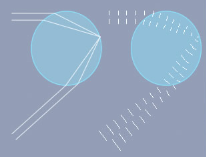Strange Supernumeraries - OPOD
Strange Supernumeraries: Exploring the Phenomenon
Have you ever gazed at the sky and witnessed a captivating display of colorful bows and fringes that seem to defy the laws of optics? These intriguing atmospheric phenomena, known as supernumeraries, have puzzled scientists and observers for centuries. In this article, we will delve deeper into the fascinating world of strange supernumeraries, shedding light on their formation and exploring the various theories that attempt to explain their enigmatic nature.
The Beauty of Strange Supernumeraries
One remarkable example of strange supernumeraries was captured by Brian Turner in a photograph taken over London. In the image, we can observe a primary bow that appears discontinuous, with broad supernumerary fringes extending from it. The separation and width of these fringes increase as they fan out towards the top of the picture. What makes this phenomenon particularly intriguing is the fact that it is the result of small droplets that likely never even reached the ground as rain.
The Role of Droplet Size in Supernumerary Formation
The formation of supernumeraries is closely linked to the size of the water droplets present in the atmosphere. As droplets decrease in size, diffraction effects become increasingly significant. This leads to the broadening and shrinking of rainbows, including the primary bow from which supernumeraries emerge. In the case of the photograph mentioned earlier, it is evident that the droplets responsible for the supernumeraries are smaller towards the top of the picture.
Explaining Supernumeraries: Rays and Waves
Scientists have proposed various explanations for the formation of supernumeraries, often involving a combination of classical ray optics and wave optics. One theory suggests that for a given angle inside the primary bow, there are always two classical ray paths contributing light. These paths have different lengths, and waves can be imagined along them. Depending on whether these waves are in phase or out of phase when they leave the droplet, a series of bright and dark fringes, known as supernumeraries, are formed.
The Influence of Path Difference on Supernumeraries
The path difference between the two sets of waves along the ray paths plays a crucial role in the formation of supernumeraries. As the angle changes, the path difference varies, leading to a succession of bright and dark fringes. The separation and width of these fringes increase as the droplets responsible for the supernumeraries become smaller. This interplay between classical ray optics and wave optics provides a partial explanation for the captivating display of strange supernumeraries.
Unraveling the Mystery
While the phenomenon of supernumeraries has been observed and studied for centuries, there is still much to uncover about their intricacies. Scientists continue to investigate the role of droplet size, diffraction effects, and the interplay between rays and waves in order to gain a deeper understanding of these captivating atmospheric optics phenomena.
Conclusion
The world of atmospheric optics never fails to amaze us with its bewildering displays. Strange supernumeraries, with their captivating fringes and bows, provide a mesmerizing spectacle for those fortunate enough to witness them. As we unravel the mysteries behind their formation, we come closer to understanding the intricate workings of light and water droplets in our atmosphere. So next time you find yourself gazing at the sky, keep an eye out for these elusive phenomena and marvel at the wonders that nature has in store.

Strange Bows & Supernumeraries
Brian Turner pictured this sight over London.
A discontinuous main primary bow is on the right. Broad supernumerary fringes fan out from it to the left, their separation and width increasing towards the top.
©Brian Turner, shown with permission
This bow is the product of small droplets that probably did not even reach the ground as rain.
The split primary bow could be due to two sheets or layers of different size droplets each producing a bow of different size. As drop size decreases diffraction effects become increasingly significant. The rainbow broadens and shrinks.
Supernumeraries are also diffraction effects. They were first called ‘supernumeraries’ because, in ray optics, they were not supposed to exist. Their separation and width increases as droplets get smaller. Here the drops are evidently smaller towards the top of the picture.

Supernumeraries can be 'explained' in several ways. One way invokes a (dubious?) mixture of classical rays and of wave optics.
For a given angle inside the main primary bow there are always two classical ray paths contributing light.
Enter waves: Imagine them strung along the two ray paths. The paths have different lengths and the two sets of waves may, or may not, be in phase when they leave the drop. In-phase waves give light, out-of-phase darkness. The path difference depends on the angle and there are thus a series of bright and dark fringes - supernumeraries.

Note: this article has been automatically converted from the old site and may not appear as intended. You can find the original article here.
Reference Atmospheric Optics
If you use any of the definitions, information, or data presented on Atmospheric Optics, please copy the link or reference below to properly credit us as the reference source. Thank you!
-
<a href="https://atoptics.co.uk/blog/strange-supernumeraries-opod/">Strange Supernumeraries - OPOD</a>
-
"Strange Supernumeraries - OPOD". Atmospheric Optics. Accessed on November 26, 2024. https://atoptics.co.uk/blog/strange-supernumeraries-opod/.
-
"Strange Supernumeraries - OPOD". Atmospheric Optics, https://atoptics.co.uk/blog/strange-supernumeraries-opod/. Accessed 26 November, 2024
-
Strange Supernumeraries - OPOD. Atmospheric Optics. Retrieved from https://atoptics.co.uk/blog/strange-supernumeraries-opod/.